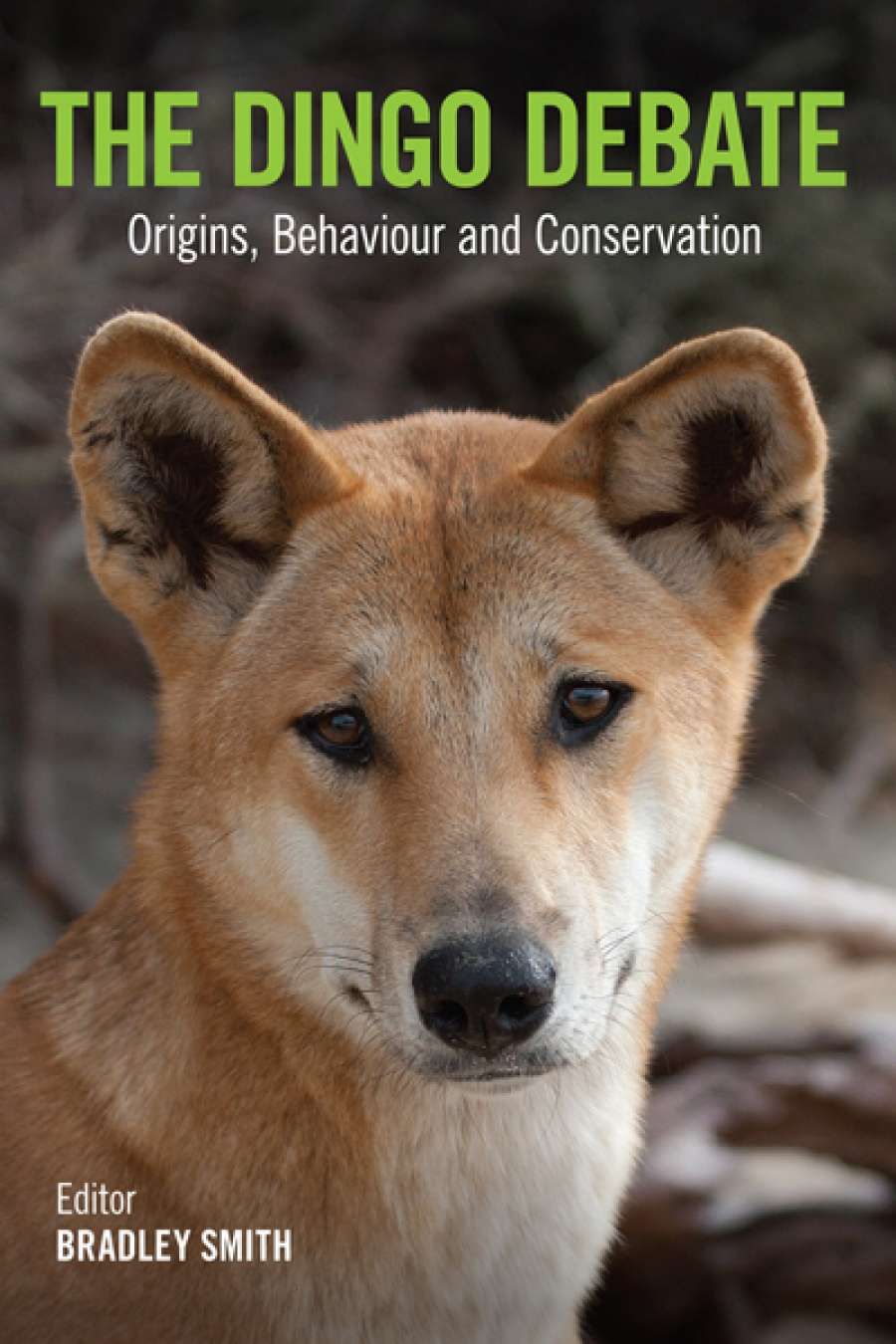
- Free Article: No
- Contents Category: Environmental Studies
- Custom Article Title: Peter Menkhorst reviews 'The Dingo Debate' edited by Bradley Smith
- Review Article: Yes
- Online Only: No
- Book 1 Title: The Dingo Debate
- Book 1 Subtitle: Origins, Behaviour and conservation
- Book 1 Biblio: CSIRO Publishing, $39.95 pb, 321 pp, 9781486300297
Dingoes are perhaps the last remaining truly wild dogs, despite having been partially domesticated somewhere in east Asia before being brought to Australia about 4,000 years ago. On arrival in the far north, dingoes resumed a wild lifestyle and spread across the entire continent, occupying virtually every environment, from deserts to rainforest and alpine regions. They could not, however, colonise Tasmania – they arrived too late to cross the land bridge before it was flooded by rising sea levels some 12,000 years ago. Dingoes are adaptable, intelligent, and resilient, as indicated by the deliberate crossing of dingoes with domestic dogs to produce dogs tough enough to work in the cattle industry in northern Australia.
When not persecuted by land managers, wild dingoes retain many of the behaviours of ancestral dogs: for example, having only one short breeding period each year, maintaining a group territory, living as a cooperative family unit, and possessing a complex vocal repertoire. In this it could be argued they are unique; most other dog species and breeds, apart from wolves, have been domesticated. This confers great scientific interest and conservation value on the dingo.
How to handle the dingo is one of the most perplexing issues in Australian wildlife management. Some questions that arise are: given that it was introduced to Australia by humans about 4,000 years ago, should it be considered native fauna? For the last 200 years, there has been widespread hybridisation with domestic dogs and it is difficult, often impossible, to distinguish pure dingoes from hybrids, so how can we judge the conservation value of a particular individual or population? Given the widespread hybridisation, do we have a hope of conserving the dingo, assuming that we decide that we want to? The dingo is a pest to the pastoral industry, particularly sheep farming, and costly programs, including a 5,600-kilometre exclusion fence, aim to eradicate or control populations. So should it be protected at all?
 Dingo, Northern Territory (photograph by Christopher Watson via Wikimedia Commons)
Dingo, Northern Territory (photograph by Christopher Watson via Wikimedia Commons)
‘Dingoes are perhaps the last remaining truly wild dogs, despite having been partially domesticated somewhere in east Asia before being brought to Australia about 4,000 years ago’
Until recently, the last question has dominated dingo management and the focus has been squarely on eradication, usually by poisoning. Outside the most densely settled regions, these attempts at eradication have failed; dingoes (or hybrids) remain widespread through most of the continent. In recent years, however, opinion in scientific and public spheres has swung dramatically towards recognition of the critical role played by apex predators in ecosystem stability and function. There are numerous examples from around the world of the sorts of detrimental ecological cascades that follow the removal of apex predators from ecological systems. These include the proliferation of prey species, often large herbivores, such as deer or kangaroos, resulting in over-grazing of vegetation communities, with consequent erosion and conservation losses, and adverse impacts on agriculture. In Australia, where the dingo is the only large predator, its removal can result in increased populations of the two smaller, introduced predators: the red fox and the feral cat. Higher populations of these killers spell doom for small mammals such as bandicoots, potoroos, and indigenous rodents. This somewhat unintuitive outcome has now been well demonstrated in extensive field management trials, our fauna is better off with dingoes, or dingo-dog hybrids (they are a fact of life now), in the ecosystem.
Smith and his co-authors tease out the nuances of these issues, and more, in this impressive book, which includes chapters on dingo biology and behaviour, origin and ancestry, dingo–human conflict, dingoes’ role in Aboriginal culture, their ecological role, intelligence, personality, and potential as companion animals, management in captivity, and suggestions about how Australians and dingoes might co-exist. The aim must be to reduce dingo attacks on livestock rather than to indiscriminately kill dingoes. Further, areas that retain dingo populations with low levels of domestic dog genes, such as Fraser Island, need to be prioritised for dingo conservation. Elsewhere, a pragmatic approach that emphasises the ecological role of apex predators, rather than the desire to conserve pure dingoes, is appropriate.
Until recently, our attitude to the dingo has been, on the whole, rooted in ignorance and outdated views about wildlife. This book is an important step towards improving those attitudes and deserves a wide readership.


Comments powered by CComment